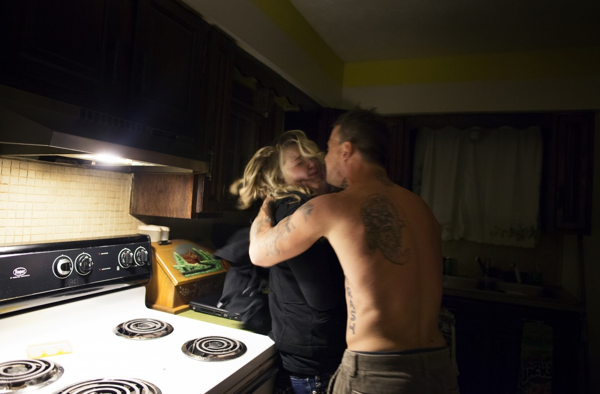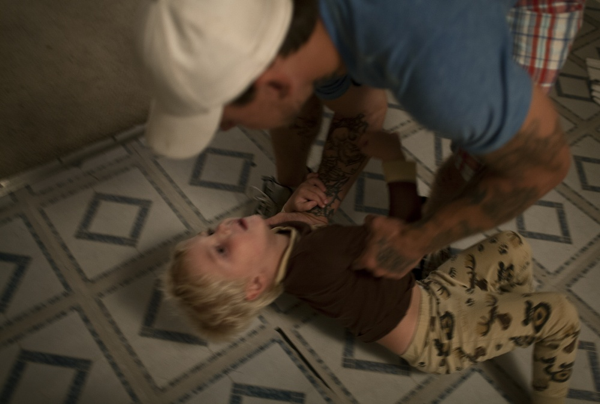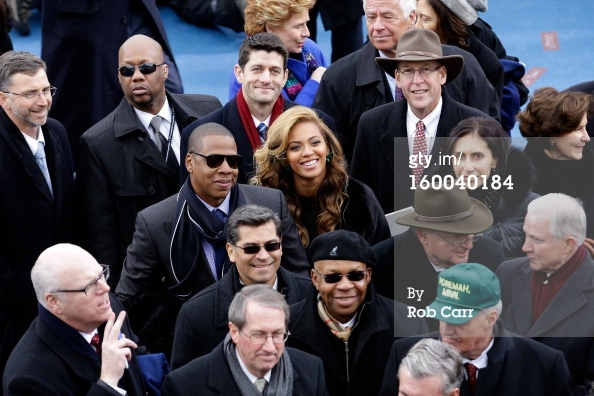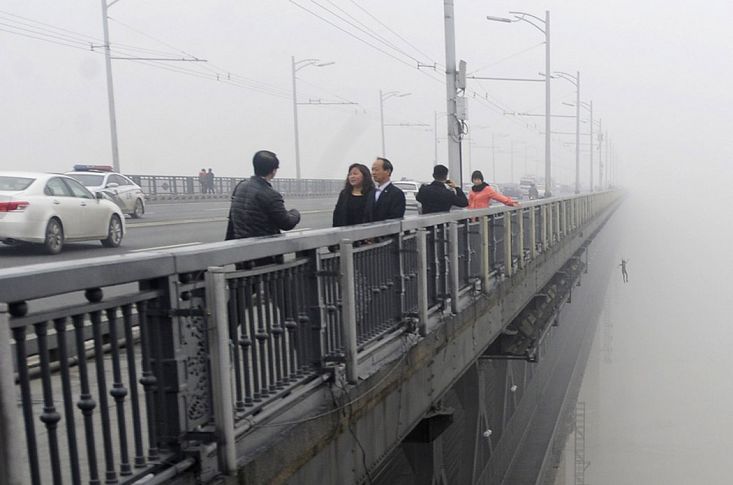Notes
The Role of the Camera and the Photos in Domestic Abuse: Maggie, Shane and Sara Lewkowicz

I imagine many of you are already familiar with the domestic violence photos TIME Lightbox published by Sara Lewkowicz. Poynter has the backstory of how Lewkowicz, shooting a long term project about the life of an inmate released from prison, ended up witnessing boyfriend Shane’s attack on his girlfriend, Maggie. Jina Moore’s piece at Salon (“Don’t blame the victim, or the photographer“) is also very informative and thoughtful, addressing key facts as well as condemnation of Ms. Lewkowicz and Maggie in the TIME comment thread, as well as the previous incarnation at Fotovisura.
If Moore speaks out largely for the photographer and for Maggie, however, it’s important also to speak out for the role of the camera as well as the photographs. First of all, who can say where this couple and the attack would have gone without a camera present? Moore addresses the point this way:
In case it isn’t clear, it is reasonable to think that Shane thought he was holding back for the camera. It seems reasonable to think that Shane thought what he was doing was harmless enough that even people whose fucking business it wasn’t could watch. It seems reasonable to think Maggie believed the photographer-witness to be her best bet for safety. It would, therefore, it seems to me, be reasonable to think that the act of documentation was not merely passive; it was also protective.
When we look at photos, we primarily take them as descriptive. Like a view through a window. Like a fly on the wall. In this case, however, it must have been clear to Maggie as well as Shane that what was happening in real time was “on the record,” that the photos served as much like testimony as description. Whereas abuse is typically characterized by a silent and hidden act of violence, it’s likely the presence of the camera and the recording of the incident was determinative in terminating the relationship. Agreeing with Moore, I think we can credit the camera in large part for confining the relationship to this single act of violence, the arrest precipitating Maggie and her children moving on.
Another effect of the recording? In contrast to the tendency to suppress or minimize an abusive encounter, the photos served automatically as an extension of Maggie’s voice, the existence of the images equivalent to an unquestionable determination to inform friends, family and the entire community about the event that just transpired. In most cases, guilt, shame, embarrassment, fear of retribution or conflicted feelings for the abuser can and will suppress the act of speaking out. The existence of the photos, however — which belonged to the photographer and were destined for distribution given Maggie’s prior assent — were instant insurance Maggie’s voice would be heard, and apparently, the leverage for immediate action.
I can’t help but think the presence of the camera helped prevent that escalation, the act of “going off camera” established a higher bar and a discernible step up to Shane’s behavior. Of course, who’s to know whether two-year-old Memphis interjecting herself at this point — however briefly, as Moore emphasizes — might have been the factor to curtail greater violence, though it could have been some combination of camera and daughter. I’m also thinking about Shane’s psychology and the presence of the camera, especially his prompting to move to the basement and away from the camera. Writes Moore:
In one caption, Sara writes that Shane tried to coax Maggie into the basement by offering Maggie two options: keep getting beaten in the kitchen, or they go “talk privately” in the basement. But there’s a clause that’s not in the caption: “What he said was — he pointed at me at one point and said, ‘Because it’s none of her fucking business.’” … “[Maggie] just kept saying no, I’m not going down there with you,” Sara told me.
In submitting to his violent impulses, Shane also knew the attack would be public. Not that that knowledge was enough to shut it down but I’m wondering what effect it did have. Moore seems unsure whether the camera forced him to apply some break or he could have cared less. I’m wondering if Shane recognized the recording would force a greater reckoning — not that he was consciously thinking it would end the relationship and/or return him to jail — but that he knew, at some level, that hated camera might also save him from the tortured dependency and jealous rage he couldn’t help. Since most people, as Moore also indicates, seem terribly uncomfortable about actually addressing the images, let’s go there.
Given the tendency of photos to be more binary, fixed to one sentiment or, in the case above, one-side of the love/hate equation or the other, what the photos disconcertingly present is inconsistency in behavior. I think it’s that contradiction that leads certain viewers to lash out at Maggie, seeing her in one frame as loving girlfriend and in the next, furiously showing Shane the door. I don’t know how you get around that, and perhaps it’s what requires so much courage for someone like Maggie to submit to this documentation, her internal life being more complicated than desiring a convict with violent tendencies who related to her mostly as a possession.
Beyond the abuse imagery and the confrontation scenes themselves, however, the photos of Shane certainly contribute to a larger picture of abuse. The shot of Shane scissoring Maggie on the couch — she in between him and her child, her attention on the TV and his, seeking hers — speaks eloquently to his hunger for mirroring, and probably sex, and his clawing possessiveness.
The photo of Shane bellowing like an animal in front of the TV (a cop show??) is profound for the stillness in which it captures such abject rage.

Perhaps even more powerful though, as it hits my antennae, is the shot of Shane’s tensed body angrily gripping Maggie’s little boy, Kayden. (And yes, the photo makes me think, my shrink hat in place, about abuse indications earlier on.)
What’s really creepy, however, are the portraits at the amusement park. Yes, there’s the photo of Shane adamant and starving to capture Maggie’s attention while little Memphis (perhaps sensing the same something that caused her to intercede in the abuse that night) is split off by Shane into the happy meal universe.

What I really can’t get over and can’t stop staring at is Shane’s crazy, screaming (and amazingly, also, dripping) warning flag of a tattoo. Besides wonder what it was like for Maggie to see herself constantly around his neck, how very twisted to see Maggie’s name in dark giant letters like he couldn’t swallow or breathe without her.
(photos: Sara Lewkowicz)


Reactions
Comments Powered by Disqus